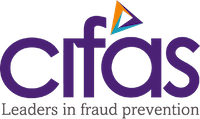As regular readers will know, keeping safe online is something we feel very strongly about at Loans 2 Go. Our recent series Stop the Scammers provided lots of tips about how to recognise and respond to scams on computer and mobile devices. And we have a Fraud and Scams page on our site that contains up to date information on how to spot fraudsters and scams.
However, during the recent cyber attack on M&S some personal customer data was stolen, such as telephone numbers, home addresses and dates of birth. This kind of occurrence is known as a data breach. It shows just how important it is to protect your personal data online, so that even if there is some kind of data breach that is completely out of your control, you should be able to recover from it quickly.
In this article we look at five things you need to do after a data breach, and also run through five tips and reminders about what you can do to make sure that your online personal data is as safe and secure as it can be.
Five things to do after a data breach
A data breach is when information held by an organisation is either stolen or accessed without permission. It is particularly impactful if the data belongs to customers of that organisation, because there is then the risk that criminals could use this information to contact customers and scam them into divulging more information and/or losing money.
So if you hear of a data breach affecting an organisation of which you are a customer, it makes sense to follow our five simple steps to ensure that your personal data is safe.
It is worth contacting the organisation to find out whether or not the data breach affects you. There may be reliable information on their website or social media channels, or you could email them. They may also contact you, but beware of messages you receive in case they are not genuine : see below.
You need to be clear about what kind of breach has occurred, whether you are directly affected, and what you need to do next.
Be cautious about emails from the organisation
This is a tricky one. After a data breach, an organisation is legally required to inform you if your data has been affected. However, this also provides a golden opportunity for criminals to cash in on the effects of the data breach. So always be cautious about messages that seem to come from the organisation, as there is a possibility they may not be genuine.
An email that is not genuine is known as a “phishing” email. The aim of the email is to trick you into providing more personal information about yourself, often by clicking on a link in the email which will then redirect you to a fake website. Both the email and the website may look very like the style of the original organisation, but are set up to steal your data and, ultimately, make money from you.
We cover the topic of phishing emails in more detail in our article How to recognise a phishing email. If you receive what you think is a phishing email you can forward it to the National Cyber Security Centre’s Suspicious Email Reporting Service at [email protected]
Monitor your online accounts
After a data breach, always check your online account(s) with the organisation that has been attacked. You need to be sure that there has been no unauthorised activity on the account(s). For example, be particularly aware of:
- Issues with being unable to log into your account(s);
- Notifications about logins or attempted logins from strange locations or at unusual times;
- Messages or transactions from your account that you don’t recognise.
Bear in mind that these kinds of activities could appear quite a long time after the data breach, so keep checking the account(s) regularly to be up to date with what is going on.
Take steps to recover any hacked account
If you think that one of your accounts may have been hacked, the first thing to do is to contact the account provider for specific advice on what to do. This is particularly important in the case of email, as your email account tends to provide information and access about many other accounts that you have.
If you can access the account, make sure you change the password immediately, and also check the account’s security and privacy settings. It’s also important to check the forwarding settings on your email account in case hackers have changed the settings to forward your emails to their account.
Log out of the account and any related apps on all your devices then log back in with the new password. At this point also set up Two Factor Authentication (2FA) on any accounts that don’t already have it. We explain this in more detail below.
It’s a good idea to notify your contacts on the account, just to make them vigilant for any unusual messages. And also keep checking other online accounts,, particularly financial and shopping accounts to monitor for unauthorised activity.
If the hacking results in any loss of money you need to tell your bank and also report it as a crime to Action Fraud, the UK’s reporting centre for cyber crime. And if you are in this situation, and need some cash to tide you over, Loans 2 Go’s emergency loans may be able to help.
Check whether your data has been in any other data breach
For peace of mind, it’s also a good idea to check if your personal data has appeared in any other public data breaches. You may be able to find this out from your antivirus or password manager tools, and if you use a credit reference agency such as Experian, they will notify you too.
Alternatively there are a number of online tools that you can use to search for data breaches, such as Haveibeenpwned.
Protecting your personal data online
As well as organisational data breaches, your personal data can be compromised online on an individual basis. But there are things that you can do to minimise the risk of this happening to you:
Strong passwords are essential to protect your online accounts, particularly your email account as this usually provides access to many other personal accounts.
It can be difficult to think of strong passwords, and some browsers will suggest strong passwords for you. Another popular option is to use three random words strung together to create a unique password.
But having so many different passwords can be difficult to remember, which can then lead to further problems, particularly if you are trying to access something in a hurry. So many people like to use some kind of password manager to store passwords securely and synchronise them across all your devices.
Some web browsers and mobile operating systems have password management capability already built into them. Other popular password managers include 1Password and NordPass.
Keep your devices up to date
Another essential element to keeping personal data safe is to install the latest software and app updates. These contain vital security updates to help protect your devices from viruses and other kinds of malware, so it’s important not to ignore notifications to update devices or apps. It is worth taking a few minutes to update your device rather than risk a security issue.
An even better option is to turn on automatic updates in your device’s settings, as this will enable updates to be applied automatically without you having to do anything.
Use Two Factor Authentication (2FA)
Earlier we mentioned Two Factor Authentication (2FA) – also known as Two Step Verification – and this is another recommended way to help protect online accounts. 2FA requires not just a password but also a second proof of identity before you can access an account.
Examples of this second factor are:
- Answering a security question;
- Entering selected letters of some memorable information;
- Entering a PIN or code sent to you by SMS or email;
- Doing a face scan;
- Touching your fingerprint.
Having to enter further information reduces the risk of unauthorised access to your account.
A backup is a copy of your data that is stored in a separate location. The most common location for backup data is now on the internet – known as cloud storage – but in a separate place from your main storage area.
Other alternatives for backups are on another computer, or some kind of removable media such as USB stick, SD card, or external hard drive.
It’s essential to backup anything that you regard as important. This could include financial, business and legal documents, but also items of more personal significance such as photos, memorable emails and artistic creations (novels, stories, music, artwork etc). Having backup copies means that you will never lose the electronic records of things you either need or love.
Be careful what you share online
Another essential element to keeping your personal data safe online is to never share information unless you know why it’s needed and are happy to share it on that basis. Many websites encourage you to create an account when you buy something or even when you are just browsing. But don’t do this unless you feel it’s necessary. Similarly, be wary of games and quizzes that need you to log into social media to generate a result. Always remember that the result of any of these transactions will be more organisations having access to your personal information.
Also be careful what you share on social media regarding your personal information and whereabouts. Giving too much away about yourself, particularly if your settings are not set to the highest privacy levels, could leave a trail of clues that a skilled hacker could piece together to guess passwords or other security information.
We hope that the above information helps you to take steps to protect your personal data online and to know what to do in the event of a data breach.
And if at any stage you need some extra money to upgrade your devices or their security, remember that Loans 2 Go offer a range of personal loans which could help you to get sorted.
For more useful tips on contemporary living, visit us here again soon at Loans 2 Go.


 Now is the time to start planning your financial goals for 2026
Now is the time to start planning your financial goals for 2026 
















